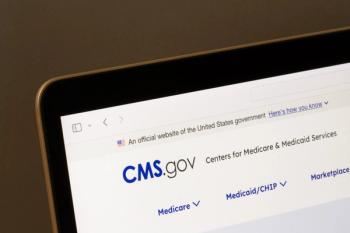
- Drug Topics August 2022
- Volume 166
- Issue 8
Vivjoa Approved for Recurrent Vulvovaginal Candidiasis
Oteseconazole is a treatment option for those living with a previously unmet medical need.
On April 26, 2022, the FDA approved inhibitor that targets CYP51 and is available as oteseconazole (Vivjoa), an oral azole antifungal indicated to reduce the incidence of recurrent vulvovaginal candidiasis (RVVC) in women with a history of RVVC who are not of reproductive potential.1 Oteseconazole is an azole metalloenzyme a single-drug regimen or in combination with fluconazole. Antifungal therapy may be instituted before the results of the cultures are known and adjusted accordingly when results become available.2
Efficacy
The first 2 clinical trials (NCT03562156 and NCT03561701)3,4 included a total of 656 adults and postmenarcheal pediatric women with RVVC who were randomly assigned to receive either oteseconazole only or placebo.
A third trial (NCT03840616)5 evaluated safety of oteseconazole vs fluconazole and placebo in 219 adults and postmenarcheal pediatric women with RVVC.2
Oteseconazole-Only Regimen
Trials 1 and 2 each included an open-label induction phase and an 11-week maintenance phase. During the induction phase, participants received 3 sequential doses of fluconazole 150 mg every 72 hours on days 1, 4, and 7. At 14 days following the first fluconazole dose, if the acute VVC episode was resolved, participants were randomly assigned 2:1 to receive either oteseconazole 150 mg or placebo for 7 days, followed by 11 weekly doses during the maintenance phase; 326 and 330 patients, respectively, entered this phase. Primary efficacy end points were the proportion of patients with greater than or equal to 1 culture-verified acute VVC episode during the maintenance phase through week 48.3 The average percentage of patients with an acute VVC episode was lower in the oteseconazole group vs the placebo group in both trials (6.7% vs 42.8% and 3.9% vs 39.4%, respectively).2
Oteseconazole and Fluconazole Regimen
Trial 3 evaluated the efficacy and safety of oteseconazole vs fluconazole and placebo. This trial also included induction and maintenance phases. Participants received a total dose of oteseconazole 150 mg over 2 days (600 mg [4 × 150 mg] on day 1 and 450 mg [3 × 150 mg] on day 2) or 3 sequential doses of fluconazole 150 mg every 72 hours on days 1, 4, and 7. Patients returned 14 days after the first dose and moved to the maintenance phase if the acute VVC episode was resolved. During the maintenance phase, patients received oteseconazole 150 mg or placebo weekly for 11 weeks.5 The primary efficacy end point was the proportion of patients with greater than or equal to 1 culture-verified acute VVC during the maintenance phase or who failed to clear their infection during the induction phase. The average percentage of patients with greater than or equal to 1 culture was lower in the oteseconazole group vs the fluconazole and placebo group (10.3% vs 42.9%, respectively).2
Safety
The most frequently reported adverse events were headache (7.4%) and nausea (3.6%). One patient discontinued therapy because of allergic dermatitis. Because of the risk of embryo-fetal toxicity, oteseconazole is contraindicated in women of reproductive potential and in women who are pregnant or lactating. Medication administration in conjunction with a high-fat, high-calorie meal increased concentrations, but no significant differences were observed with a low- fat, low-calorie meal.2
Dosing and Special Considerations
The oteseconazole-only dosage regimen is initiated as a 600-mg capsule on day 1 and 450 mg on day 2, each as a single dose. The next dose is administered on day 14 as a 150-mg capsule once weekly for 11 weeks.
The fluconazole/oteseconazole dosage regimen is initiated with fluconazole 150 mg orally on days 1, 4, and 7, followed by oteseconazole 150 mg once daily for 7 days, starting on day 14 through day 20. After day 20, the next oteseconazole dose is administered on day 28 as a 150-mg capsule once weekly for 11 weeks. Oteseconazole must be taken with food.2
References
- FDA approves Mycovia Pharmaceuticals’ VIVJOA (oteseconazole), the first and only FDA-approved medication for recurrent vulvovaginal candidiasis (chronic yeast infection). News release. Mycovia Pharmaceuticals; April 28, 2022. Accessed July 12, 2022.
https://mycovia.com/wp-content/uploads/2022/04/FINAL-Press-Release_04.28.22.pdf - Vivjoa. Prescribing information. Mycovia Pharmaceuticals Inc; 2022.
https://www.accessdata.fda.gov/drugsatfda_docs/label/2022/215888s000lbl.pdf - A study of oral oteseconazole for the treatment of patients with recurrent vaginal candidiasis (yeast infection)(VIOLET). ClinicalTrails.gov. Updated April 6, 2022. Accessed July 12, 2022.
https://clinicaltrials.gov/ct2/show/NCT03562156 - A study of oral oteseconazole (VT-1161) for the treatment of patients with recurrent vaginal candidiasis (yeast infection) (VIOLET). ClinicalTrials.gov. Updated December 20, 2021. Accessed July 12, 2022.
https://clinicaltrials.gov/ct2/show/NCT03561701 - Study of oral oteseconazole (VT-1161) for acute yeast infections in patients with recurrent yeast infections (ultraVIOLET). ClinicalTrials.gov. Updated February 4, 2022. Accessed July 12, 2022.
https://clinicaltrials.gov/ct2/show/NCT03840616
Articles in this issue
about 3 years ago
Managing ADHD in Children and Adultsabout 3 years ago
At a Glance: Interim COVID-19 Immunization Scheduleabout 3 years ago
Pharmacists Fight to Take on Opioid Use Disorderabout 3 years ago
What's Coming in the 2022-2023 Flu Seasonabout 3 years ago
Pendulum Ping Pongabout 3 years ago
Become the Pharmacy of the Future With Technology SolutionsNewsletter
Pharmacy practice is always changing. Stay ahead of the curve with the Drug Topics newsletter and get the latest drug information, industry trends, and patient care tips.





















































































































































